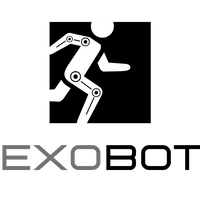Blog
bridging biology & technology
The Evolution of Bionic Prosthetics for Amputees
The landscape of bionics is rapidly evolving, ushering in a new era of possibilities for individuals with limb loss. From bionic limbs that closely mimic natural movements to neuroprosthetics that interface directly with the nervous system, the field of bionics is transforming the lives of amputees in profound ways.
In this blog, we'll explore the interconnected advancements in bionic prosthetics, focusing on how these innovations are enhancing mobility, functionality, and quality of life for amputees.
Hitesh Jangra
Feb 30, 2024
Mimicking Natural Movements
The Rise of Bionic Limbs
Modern bionic limbs represent a remarkable fusion of biology and technology, enabling users to perform daily tasks with remarkable ease and dexterity. Companies like Exobot, Össur and Open Bionics have pioneered the development of prosthetics that use myoelectric sensors to detect electrical signals from the user's remaining muscles. These signals are then translated into precise movements, allowing for natural and intuitive control of the artificial limb. This seamless integration of biology and technology is revolutionizing the way amputees interact with their prosthetics, restoring a sense of independence and autonomy.
Integrating with Nervous System
The Promise of Neuroprosthetics
Neuroprosthetics are pushing the boundaries of bionic technology by directly interfacing with the nervous system, offering even greater levels of control and functionality. Devices like the DEKA Arm System, also known as the "Luke Arm," can be controlled by brain signals or myoelectric inputs from the user's residual limb. This groundbreaking technology enables users to perform complex movements with a high degree of precision, bridging the gap between mind and machine. By restoring natural limb function through neural interfaces, neuroprosthetics are empowering amputees to live more fulfilling and active lives.
Personalization and Customization
Tailoring Prosthetics to Individual Needs
The advent of 3D printing technology has revolutionized the customization of bionic prosthetics, allowing for personalized solutions tailored to the unique needs of each user. Prosthetists can now create bespoke limbs that fit the user's body perfectly, ensuring optimal comfort and functionality. Beyond physical fit, customization extends to aesthetics, with users given the opportunity to choose the appearance of their prosthetics. This personalized approach not only enhances the user's sense of identity and self-expression but also plays a crucial role in improving overall satisfaction and acceptance of the prosthetic device.
Restoring Sensory Feedback
Enhancing the User and Prosthesis Connection
A critical aspect of natural limb function is the ability to receive sensory feedback from the environment. Advances in bionics are working to restore this sense of touch through the integration of sensors into prosthetic limbs. These sensors can detect pressure, temperature, and texture, allowing users to experience sensations similar to those of a natural limb. By providing real-time feedback to the user's nervous system, these sensory-enhanced prosthetics improve proprioception and spatial awareness, enhancing the user's ability to interact with their surroundings and perform tasks with greater confidence and precision.
Looking Towards the Future
As we look to the future, the possibilities for bionic prosthetics are limitless. Advances in artificial intelligence, regenerative medicine, and tissue engineering hold the potential to further enhance the functionality and integration of bionic limbs. With ongoing research and development, we can expect to see even more sophisticated and adaptive prosthetic solutions that continue to improve the lives of amputees around the world. By bridging the gap between biology and technology, bionic prosthetics are reshaping the way we think about mobility, independence, and quality of life for individuals with limb loss.
At Exobot Dynamics, our commitment lies in turning this vision into a tangible reality. Through unraveling the possibilities of these technologies, we aim to establish a world where bionic limbs enable individuals with disabilities to embrace life to the fullest.
Exobot Dynamics pvt ltd
Join us
On our mission to end physical disability...
